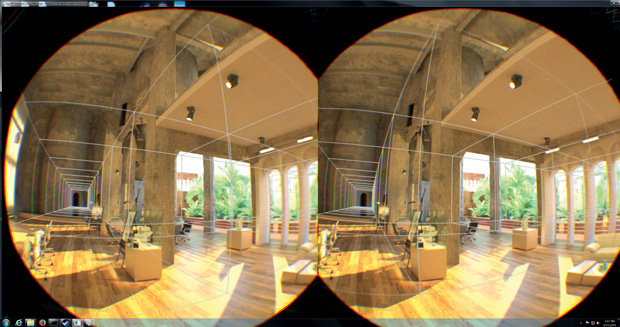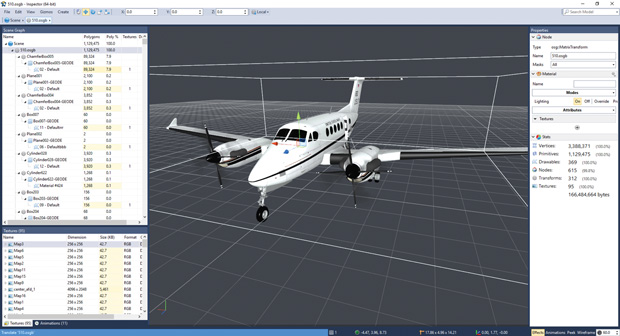
With NVIDIA Iray, the company was able to develop a sense of scale and lighting dynamics for its new corporate campus. Image courtesy of NVIDIA.
Latest News
December 1, 2016
 With NVIDIA Iray, the company was able to develop a sense of scale and lighting dynamics for its new corporate campus. Image courtesy of NVIDIA.
With NVIDIA Iray, the company was able to develop a sense of scale and lighting dynamics for its new corporate campus. Image courtesy of NVIDIA.Engineering technology is constantly evolving to help solve everyday problems and is also changing the way consumers interact with their reality. And, with the emergence of virtual reality (VR) and augmented reality (AR), it seems that product design is taking a cue from the entertainment and gaming market. While VR has been marketed as something more suited for media markets, more companies are looking to use VR to propel a new era of product design and human-machine interaction. This year, Goldman Sachs forecast the engineering VR market to reach $4.7 billion by 2025 with 3.2 million users across the globe. “In product manufacturing, VR/AR can enable test scenarios and designs before the products are made, driving productivity and cutting down on the cost of wasted materials,” the research firm writes. Similar to engineering markets such as simulation and HPC (high-performance computing), VR technology isn’t entirely new to industry giants—Ford has been using VR since 2000; Boeing also opened its first lab in Seattle in 1999. Now, more attention is being drawn to its democratization via gaming and other consumer products that might make it more accepted for use in product design. “Virtual reality will revolutionize several aspects of the product lifecycle,” says Peter Schlueer, founder and president of WorldViz. He cites design conception, realization, manufacturing and maintenance as potential candidates for disruption. Currently, engineers are already using VR/AR for design exploration, lean manufacturing applications and service training, he explains.Processing Power Needed for Virtual Reality
Though most picture headsets as the essential hardware for VR, the true power comes from the GPU (graphics processing unit). Because generating and running VR content is such a massive computing challenge, the multi-threaded nature of the GPU lends itself to such an application.
“The computing challenge of VR is so incredibly massive,” says Jason Paul, general manager for VR at NVIDIA. “Today’s immersive VR experience on the PC demand seven times the performance requirements than typical PC gaming experiences. To reach the quality of the human eye, you’d need 400 times the computing horsepower … [and] we’re just talking about the visuals.”
NVIDIA’s current offerings from VR include its graphics cards in its Quadro and GeForce lines, while AMD offers Radeon GPUs. While some of the cards in these portfolios have been branded for gamers in the past, integration with Oculus Rift, HTC Vive and various engineering workstations could further bring the technology into the engineering market. Over the past year or so, major hardware developers have debuted VR-ready workstations to help users create VR-viewable content.
Companies such as BOXX Technologies, MSI and Eurocom are promoting VR-ready hardware to engineers. “A lot of our users do have a need to not only consume the VR content, but make changes to their CAD assets that are going to get updated in real-time and pushed back out to VR,” says Joe Pizzini, technical marketing manager at BOXX.
BOXX recently released its GO MXLvr mobile workstation, which is equipped with a desktop Intel Core i7 CPU and NVIDIA GeForce GPUs. According to Pizinni, it has the highest CPU clockspeed possible in a mobile system because CPU frequency contributes to high frame rates for VR. Additionally, the high CPU frequency boost performance of single-threaded CAD applications like SOLIDWORKS and Revit.
Another offering on the market is the MSI WT 6QN, which sports a Quadro GPU and connectivity for the HTC Vive, and is certified for standard design software from Autodesk, SOLIDWORKS and PTC. “Because [it] became such a huge topic this year and it’s going to continue to grow, there will be a need for professional graphics that can handle VR,” says Maggie Chen, associate product manager at MSI Computer.
New Way of Interaction
As engineers venture into the next era of design—which moves beyond 2D drawings and starts to incorporate data-rich virtual models such as digital twins—some in the industry see VR/AR as the natural next step.
“VR is the next evolution of human-machine interfaces. We’ve been stuck with 2D for more than two decades and this is the next level, and the next huge technology wave after mobile,” Schlueer explains. With so much increasing focus on Model-Based Design an 3D engineering content, VR and AR will provide a new way of interacting with the data instead of keeping engineers limited to screens and mouse clicks.
 WorldViz’s Vizard VR software supports all major CAD formats, letting engineers view their files virtually in 3D. Image courtesy of WorldViz.
WorldViz’s Vizard VR software supports all major CAD formats, letting engineers view their files virtually in 3D. Image courtesy of WorldViz.This foundation of 3D content also sets up the future of product design for a more visual lifecycle. “VR is also the best way of reducing communication barriers between engineering departments,” notes Jacques Delacour, CEO of OPTIS. As interdisciplinary departments become the status quo for increasingly complex products, engineers can simply show how a product works and avoid confusion through convoluted spreadsheets, schematics and graphs.
For larger projects, VR can offer a way to develop a sense of scale, says NVIDIA’s Paul. He says the company used the technology to design and monitor the construction of its new campus. By integrating real-time progress data, they were able to compare the reality to the intended virtual design. This type of workflow could certainly lend itself to applications in automotive and aerospace, he notes.
Currently, most engineers are finding benefits through the use of models for either large-scale projects or high-risk situations. Similar to traditional simulation, the idea is that these virtual models can help reduce costs for test prototypes and let engineers explore possible configurations and designs. But that’s just the beginning.
“[Going forward], it needs to be easier to create these VR experiences without requiring the skills of a game engine specialist or programmer. These experiences should be accessible to the average architect or product engineer,” says Jon Wadelton, CTO of The Foundry.
This is where content creation software, such as The Foundry’s CARA VR comes in, to provide more automated assistance for content stitching, solve the physical layout of the cameras in multi-camera rigs, calculate their focal length and lens distortion and use depth-dependent warping to merge the multiple video sequences into an uninterrupted 360° view, explains Wadelton.
Additionally, developers will have to continue to make models more realistic through the integration of all the senses—and provide engineers with experiences that aren’t strictly visual. “Sensation is the most complicated of [challenges facing engineering VR]. Reproducing the human sensations is extremely important to fully complete the illusion of reality and provide the best immersive experience possible,” explains OPTIS’ Delacourt.
As integration of more realistic senses continues, the industry is also working to get tighter connections with the design software itself. Paul notes that NVIDIA is partnering with Autodesk to ensure that the software can support VR programs, while WorldViz’s Vizard does support all the standard CAD formats. However, the link between CAD and virtual reality is still somewhat disjointed. For engineering applications, users may have to wait until they can design directly on the VR model. OPTIS, CARA VR and NVIDIA’s VRWorks are some of the additional specialized software offerings on the market for generating original content.
“To use a metaphor of going to the theater: If you think of CAD as the tools that let you make the theater stage props, then the VR software is the theater itself where the whole show comes together,” says Schlueer.
As the amount of 3D content grows, and engineers are further pushed toward tighter deadlines and increased amounts of product data, VR and AR give users hardware and software so designs can be explored to their full potential—and don’t fall flat behind a 2D screen.
Subscribe to our FREE magazine, FREE email newsletters or both!
Latest News
About the Author
Jess Lulka is a former associate editor for Digital Engineering. Contact her via de-editors@digitaleng.news.
Follow DERelated Topics






